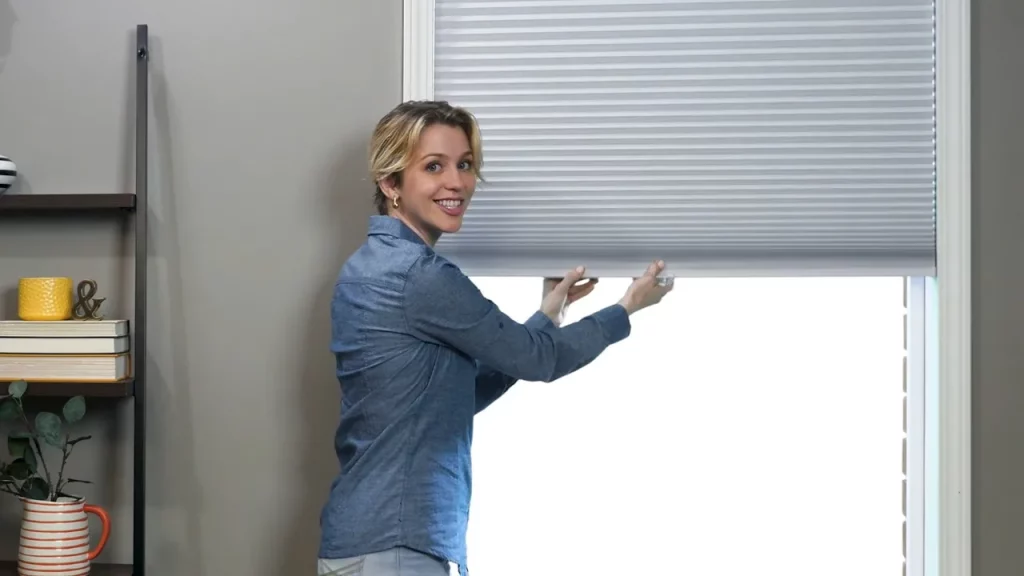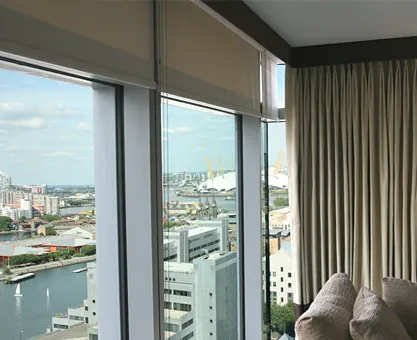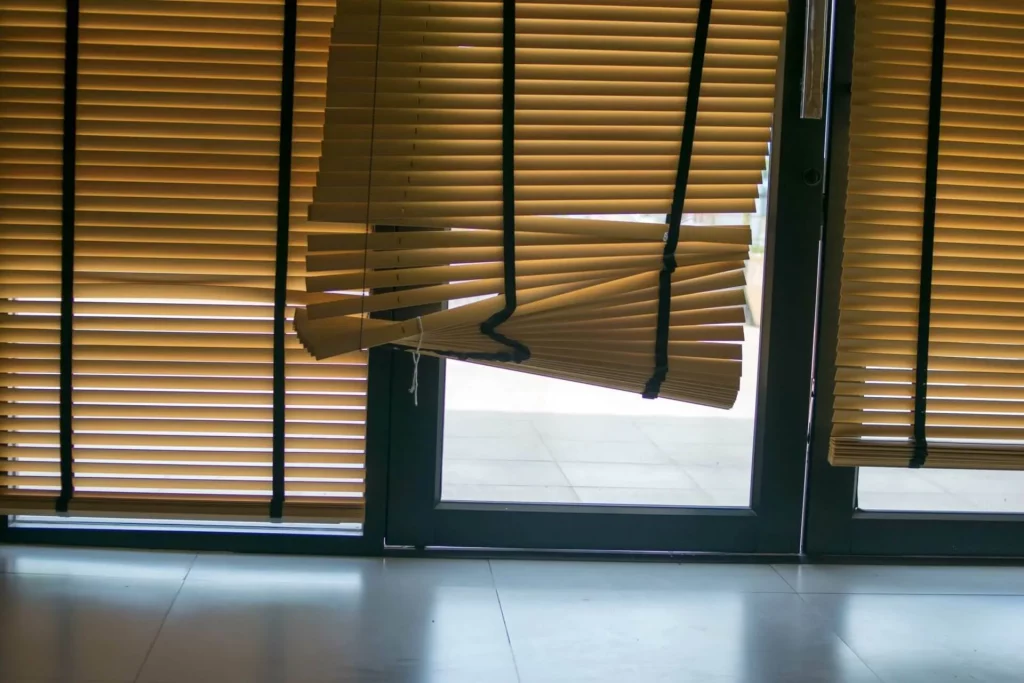Did you know the way you adjust your blinds could save you money on energy bills? Heat gain and loss causes homes to waste 30% of energy, which harms your wallet and the environment. So while shutters and blinds make your home look nice, they also help save energy, even if many people don’t know this. Double glazing and good doors can keep your home warm, but shutters and blinds are easier and cheaper to use.
Let’s learn about how you can use your blinds for the perfect privacy, light control and energy efficiency. But before we do that, it’s important to know why people face trouble firsthand when it comes to adjusting blinds. Below are some issues they face typically along with their easy solutions.
Problem 1: You Don’t Know How To Use Cordless Blinds

Solution: Cordless blinds are easy to use. To open them, twist the rod until the slats are flat. Then, pull the bottom to lift or lower the blinds. If they’re hard to move, make sure the slats are straight. Cordless blinds move up and down when you pull or push the bottom. If you need help, you can find videos or instructions online. Be gentle when using the blinds to avoid breaking them.
Problem 2: New Apartment Blinds Become Hard To Use

Solution: Most modern blinds do not have cords. To lower them, hold the bottom and pull it down. To raise them, push up. If they don’t move, check for a button on the bottom. Be careful when using it.
Problem 3: Custom Shades Ordered With Incorrect Measurements
Solution: Carefully measure your windows when undergoing custom orders. Don’t settle at peace just because you see a non-refundable label on blinds. Early precision can save your time and get your right sized fit curtains.
Problem 4: It Becomes Difficult To Adjust Blinds in Tight Space
Solution: For wider blinds near obstacles like TVs, adjust the slats to a flat position, then lift or pull down the bottom rail evenly. A step stool may help if the blinds are mounted high.
Problem 5: Blinds Get Stuck And Can’t Move

Solution: If your cordless blinds won’t move, make sure they are all straight. Try to push or pull the bottom part. If that doesn’t work, check if they are broken. You might need to get new ones.
Now that you know the problems people face when adjusting blinds and the solutions, let’s talk about how to adjust blinds for privacy, light control and energy efficiency.
Blinds Orientation for Privacy
How you tilt window blinds whether up or down changes how much light gets in and how private your room is. When adjusting blinds for privacy, use the way that works best for your window and what you need.
Blinds Up Or Down For Privacy
- Tilt Slats Up: The convex or curved side faces outward, making it harder for people at ground level to see inside. This works well for lower Floors or street-level windows to block views from passersby. It also blocks daytime privacy while still allowing some natural light to filter through.
- Tilt Slats Down: The flat side faces outward, providing a cleaner look and tighter closure. However, this may allow visibility inside depending on lighting angles. It’s best for upper floors where observers may look from taller buildings. It’s also best for nighttime privacy due to the tighter slat overlap, which reduces gaps.
Additional Tips for Adjusting Blinds

- Dual Roller Blinds: Use sheer layers for daytime privacy and blackout layers at night for complete coverage.
- Top-Down/Bottom-Up Shades: Adjust the bottom up for privacy while keeping the top open to allow sunlight.
- Vertical Blinds: Fully overlap the slats to block visibility regardless of direction.
- Honeycomb Shades: Opt for opaque shades with side channels for complete light and privacy control.
To control light and privacy with blinds, tilt the slats up to keep people from seeing in, or tilt them down for more darkness. How you tilt them depends on what you need and where the window is.
Blind Orientation for Light Control
Blinds can manage the amount and quality of light in your home. You can change how bright it is and make it less shiny by moving the slats. This helps make the room feel nice. This flexibility helps save energy and keeps your home comfortable all year.
Blinds Up Or Down For Privacy
- Slats Turned Up: When angled upward, blinds reflect sunlight toward the ceiling, creating soft, diffused light without harsh glares. This works well for living rooms and bedrooms for a calm, evenly lit environment. It also fits well workspaces to reduce glare on screens while maintaining visibility.
- Slats Turned Down: Turning slats downward allows more direct sunlight to enter, brightening the space. Use this in kitchens and bathrooms where clear visibility is needed for tasks. It’s also best for winter months to let in natural light and warm up rooms naturally.
- Fully Closed Blinds: For maximum light blocking, fully close the blinds in either direction. This is ideal for daytime naps, movie watching, or darkening rooms entirely.
- Aesthetic Appeal: Tilting the window slats up a little makes the room look nice and helps keep it private while letting in light. It also hides the parts of the window you don’t want to see.
You can change how bright a room is by moving your blinds. Tilt the slats up for soft light or down for brighter light. Changing your blinds with the seasons also helps keep your room comfortable and saves energy.
Blind Orientation for Energy Efficiency
Blinds keep your home comfortable and save money on bills. In summer, they keep the sun out to make the house cooler. In winter, they help keep the warmth inside. You don’t have to rely on other resources to maintain the temperature in both types of weather.
Adjusting Blinds in Summers
During warmer months, the focus is on blocking sunlight to prevent heat buildup.
- Slats Upward: This reflects sunlight toward the ceiling, keeping floors and furniture cooler while reducing UV damage that causes fading.
- Fully Closed Blinds: Close blinds completely during peak heat hours, especially for west-facing windows. Materials like reflective aluminum or cellular shades enhance the cooling effect.
- Use Sheer Blinds: Dual-layer blinds with a sheer option filter light while minimizing heat gain, keeping rooms cool but bright.
Combining blinds with reflective films or layered curtains further reduces summer heat.
Adjusting Blinds in Winter
In colder months, blinds help retain warmth by blocking drafts and allowing sunlight to heat your space naturally.
- Slats Downward: Angle slats downward during sunny hours to let sunlight in. This reduces heating needs and warms up the room naturally.
- Fully Closed Blinds: Close blinds at night or on cloudy days to trap heat and block cold air. Materials like wood blinds or thermal-lined fabrics provide excellent insulation.
- Top-Down/Bottom-Up Shades: Lower the top to let sunlight in while keeping the bottom closed for privacy and warmth.
For kitchens and bathrooms, use blinds that handle moisture and keep the room warm. You can also put draft stoppers on windows to help keep heat inside.
Put simply, in summer, point the blinds up, and in winter, point them down. Using special shades can help keep your home cozy all year.
What Other Benefits Adjusting Blinds Can Give You?
Shutters and blinds help keep homes warm by stopping heat from escaping and blocking cold air. Choose materials like wood or vinyl to improve energy efficiency. Wood is a good insulator, while vinyl works well in areas that may get wet. Open your shutters to let sunshine in and make your home warm. Close them to keep the house cool in summer. Using shutters with curtains helps keep your home cozy. Shutters and blinds can save you money on energy and make your home more comfy. They also help the Earth by reducing pollution.
Conclusion
Moving your blinds helps keep your home private, control sunlight, and save energy. And adjusting blinds is easy. Plus, it makes your home nice and cozy and can lower your bills. At Aura Curtains, we have great blinds and curtains to make your windows look good. Visit our collection to find something you like.
FAQs
How to shorten blinds?
It’s very easy to shorten window blinds. Just grab a sharp scissor and glue. After you’ve marked the bottom slats that need to be cut, take out the rail plugs and remove the bottom rail. Then use the scissor to cut the slat. Reinsert the bottom rail that you removed earlier. For a cleaner look, trim the cord length further. Finally, use the glue to pocket them back and tie the knots. That’s how to cut blinds that are too long.
Which way should blinds face for privacy?
Tilt the blinds up so the outside part is curved and you get total privacy. This stops people from seeing in but still lets in some light. At night, tilt the blinds down to make it harder for anyone to see inside.
How to fix blinds that are too small?
You can fill the space above your blinds by adding a bigger valance, a cornice, or some curtains. If you like some DIY stuff projects, try putting up wooden boards and paint them to match the blinds.